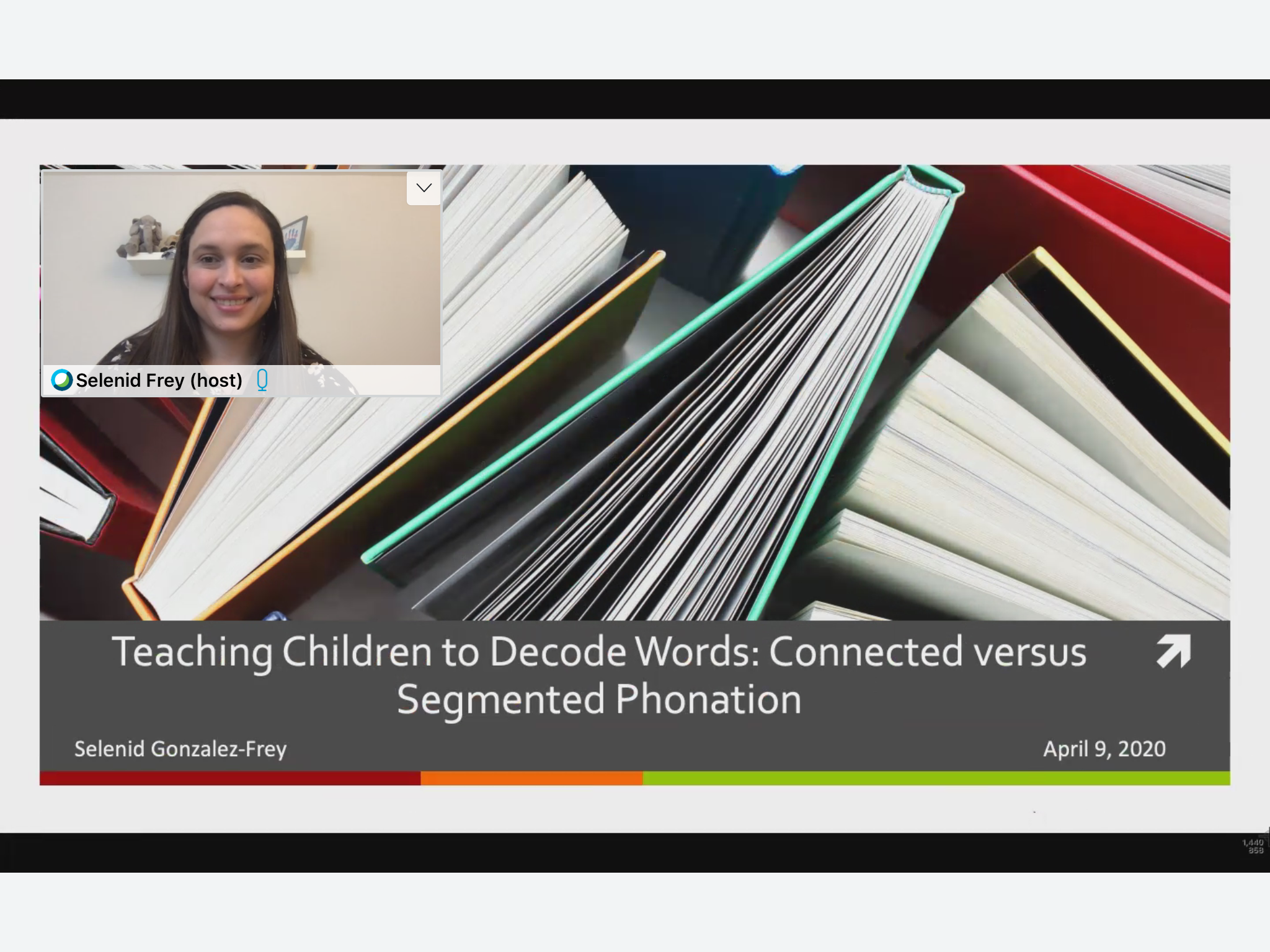
Dr. Gonzalez Frey via WebEx
Congrats to Selenid Gonzalez-Frey who successfully defended her dissertation titled, “Teaching Children to Decode Words: Connected Versus Segmented Phonation”. Her defense marks the department’s second virtual defense!
Committee Members:
Linnea Ehri, (Chair) Distinguished Professor, Educational Psychology, CUNY Graduate Center
Alpana Bhattacharya, Associate Professor, Educational Psychology, CUNY Graduate Center
Katharine Pace Miles, Assistant Professor, Early Childhood Education, Brooklyn College, CUNY
Readers:
Patricia Brooks, Professor, Psychology, CUNY College of Staten Island, Educational Psychology, CUNY Graduate Center
Robin O’Leary, Clinical Placement Specialist, QUEST, Childhood, and Childhood Special Education programs, Hunter College – School of Education
Abstract:
Two methods of decoding instruction were compared. Kindergartners who could not decode nonwords participated in the study, N = 38, M = 5.6 years. Segmented phonation, frequently used in synthetic phonics programs, taught students to convert graphemes to phonemes by breaking the speech stream (“sss – aaa – nnn”) before blending. Connected phonation taught students to pronounce phonemes without breaking the speech stream (“sssaaannn”) before blending. ). Kindergartners were matched and randomly assigned to the two conditions. Both groups were taught to decode the same set of CVC nonwords consisting of continuant consonants and vowels that could be stretched and connected without altering their phonemic identities and without breaking the speech stream. Following learning, students completed a transfer task to decode CVC nonwords with stop consonants that are harder to blend because a schwa vowel is added when stops are pronounced separately (e.g., “dǝ – a – pǝ”) and must be deleted during blending (e.g., “dap”). It was hypothesized that the connected phonation group would better understand how to blend phonemes than the segmented phonation group and hence would be able to overlook schwa vowels more easily in the transfer task. Results were supportive. Connected phonation students read the CVC nonwords with stops more accurately on the transfer task as well as a delayed posttest. Errors showed that segmented phonation students more often forgot the phonemes they had pronounced, especially initial phonemes, when they tried to blend them. In addition to treatment effects, children’s sight word reading explained significant variance in nonword reading on the transfer task. Findings carry implications for how to teach decoding more effectively.




No comments yet.